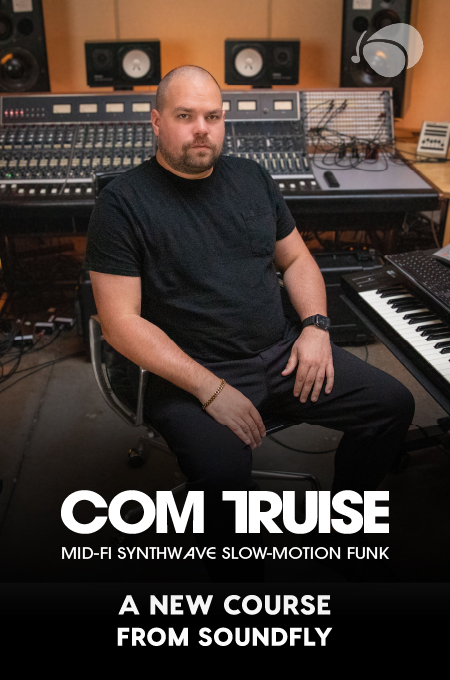+ This lesson is presented courtesy of The Pocket Queen’s course on Soundfly, Moving at Your Own Tempo. Sign up and learn how to harness your inner groove and your outer authenticity.
Whether you’re a drummer or producer, coming up with interesting beats can sometimes be a bit of a challenge.
Let’s take a closer look at some of the insights and advice PQ shares in the video above, all of which can help you develop your own pocket.
Listen Closely
We’ve heard PQ stress the importance of serving a bigger creative intention, song, or idea with everything you play. If other elements are already in place, pay attention to them and let them guide your decisions. Think about strengthening existing musical moments — like syncing up with a bass line or matching a dip in dynamics.
Similarly, avoid pulling focus from things that are meant to be in the foreground (e.g. don’t cover an important vocal line with a massive drum fill).
Fill in the blanks as needed. What if you’re starting something from scratch? When playing on her own without a pre-recorded track, PQ often pictures musical components in addition to the drums.
For instance, at the top of the video, we hear her play something similar to what Questlove does on Erykah Badu’s “Window Seat.”
She tells us she was specifically thinking about the piano stabs as she played. Check out the original track and see if you can hear what she means:
This gives her a creative direction and helps her stretch her imagination.
Pay Attention to Your Own Response
If what you’re playing feels good, it’s a solid indicator that you’re onto something. To paraphrase PQ, if it makes you move, it’s likely to do the same for your audience.
Additionally, learning to trust your instincts is key to coming up with parts that feel and sound natural.
Embrace the Importance of Dynamics
Deepening your dynamic understanding can breathe new life into how you play or what you produce.
Explore contrast. You can completely transform a beat by playing it at different dynamic levels. Think about the sort of arc you’re creating as you decide how soft or loud each moment should be.
Capture intensity while maintaining dynamic control. It seems subtle, but being able to imbue a sense of energy into something played softly or demonstrate control at louder volumes can make a world of difference.
In the video, PQ talks about Otis Brown III, who plays drums for Esperanza Spalding and is an excellent example of someone who has a true command of intensity and dynamics. Listen to his playing on “I Know You Know.”
Create Nuance and Variation
PQ mentioned the Busta Rhymes / J Dilla track “Still Shining” as an example of something she initially struggled to wrap her head around. On the surface, the beat seems simple and straightforward, but it’s full of nuances that make it complex.
The beat fills its role perfectly, bringing interest and energy while constantly supporting (and never overpowering) the vocal.
If you isolate any one moment, you find a drum part that works nicely and doesn’t seem too complicated. Listen a little longer and you find that what you thought was a fairly basic, repetitive idea has actually morphed into subtle variations of itself, bringing something fresh to the table every single time, but never overdoing it. In particular, the kick pattern is constantly changing throughout the beat.

This sort of thing is part of Dilla’s enduring genius. Though he may be known primarily as a producer rather than a percussionist, his name is one of the first that springs to mind for drummers and non-drummers alike when the word “pocket” is mentioned.
We’ll be looking at more tools and strategies for developing drum parts throughout the course, but now, it’s time for a quick practice activity.

Give these strategies a try using the audio we’ve provided as a starting place.
Once again, you can choose to practice at your drum kit or in a DAW. You can definitely spend lots of time on this one, but as a starting place, we recommend giving it 10–15 minutes.
- Listen to the bass track below.
- Come up with a simple drum part that complements what you hear. You may find it helpful to picture additional instruments as well.
- Once you have your part, experiment with some subtle variations (e.g., shift a note slightly, incorporate a cymbal you didn’t use the first time, etc.).
- Explore different dynamic treatments of your part. As a challenge, see if you can get it to simultaneously demonstrate intensity and restraint.
Download: Sample Bass Part
When you’re done, share your experience and/or your work with the Soundfly community.
Keep on Grooving…
Continue your learning with hundreds of lessons on songwriting, mixing, recording and production, composing, beat making, and more on Soundfly, with artist-led courses by Kimbra, Com Truise, Jlin, Kiefer, RJD2, and our new The Pocket Queen: Moving at Your Own Tempo.



